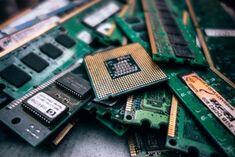Let’s begin with a basic explanation about what RAM is and why it’s important to your devices.
RAM (“Random Access Memory”) is the memory that your computer uses to temporarily store information. A RAM stick is made up of memory chips which your computer can rapidly write to and is volatile memory, meaning the information stored in it is only kept while the computer is powered on.
Signs that you don’t have enough RAM can be detected by performance issues and slow downs which indicate that it might be a RAM issue.
When you experience system slowdown, you can open up the task manager by pressing CTRL, SHIFT, and ESC. Once Task Manager opens up click on the Performance tab and from here you’ll be able to see what percentage of your computer’s RAM the system is using as shown below.
A good metric to take note of in Task Manager is the Available memory which is the amount of RAM that is not being used currently by your machine.

If you are receiving messages such as this message below it’s a tell tail sign that it’s time to upgrade the amount of RAM you have installed in your machine.

There are many factors that can affect your computer’s performance and a poor experience on your computer doesn’t necessarily mean you have a RAM issue.
For example if you have 16GB of RAM and your computer is suffering from slow speeds, it might not be a RAM issue, it could very well be your Hard Disk Drive (HDD) or Central Processing Unit (CPU) that is causing the issue. Keep an eye on your task manager when you’re experiencing slow speeds. If the task manager is reporting heavy usage on your HDD or Disk, you could consider upgrading to a Solid State Drive (SSD) and is one of the best ways to get a significant performance increase relatively cheaply.
If your system is 4 or 5 years old you might also consider getting a new system as there is only so much you can upgrade before it becomes costly and is more cost effective to get a purchase a new machine.

